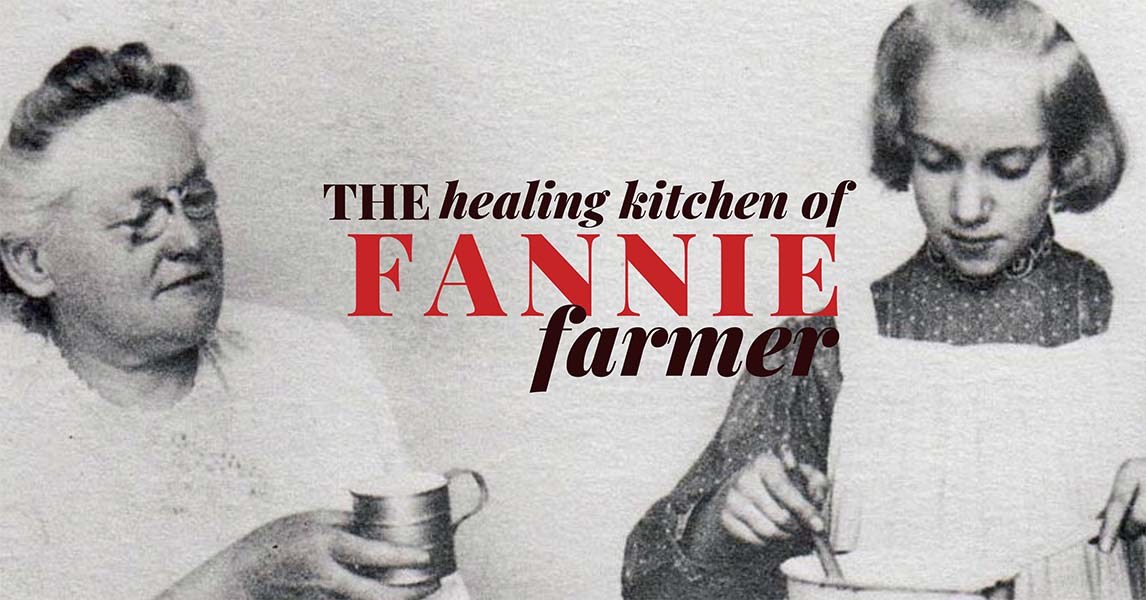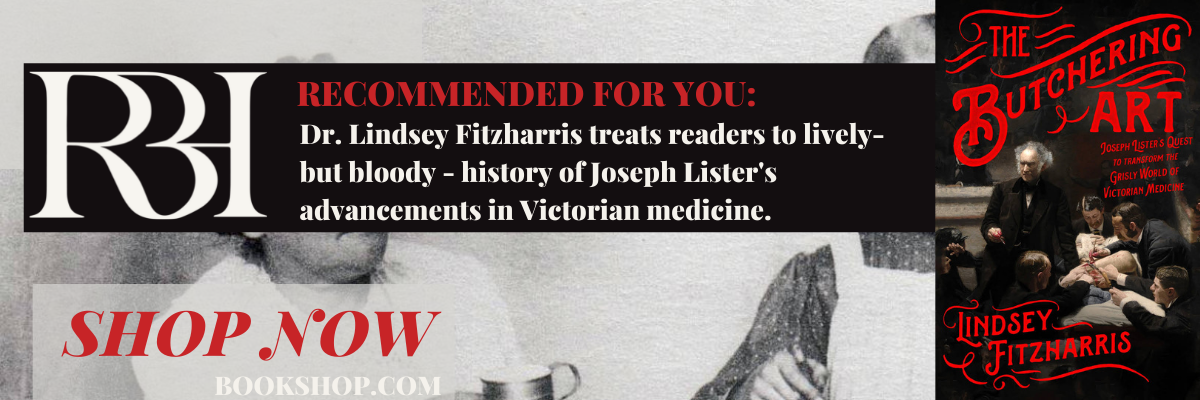“I can make soups that heal people.” she said. Then I made a joke about ‘claims not backed by the FDA… only to realize she was serious. Absolutely serious.
It was 2016. I was tasked to interview freelance candidates for a local restaurant’s winter soup season. Quirky and small, the place had a dedication to farmer’s market fresh ingredients and serving a limited, ever-changing selection of health-forward food. Every year, they hired a different chef to take creative reign of the winter seasonal soup menu.
I shuffled the candidate’s application papers awkwardly and asked, “So- tell me about how your soups heal.”
What followed was an interview-turned-university-lecture on ayurvedic cooking philosophies, the importance of soil nutrition, and how to infuse food with ‘intentions of well-being’ toward the person on the other side of the soup spoon.
It was new territory to me- but nothing new: Nutrition and dietary philosophies designed to promote wellbeing have existed for centuries. Ayurveda, or ayurvedic cooking, is considered one of the oldest sciences- having been around for the last 5,000 years.
Now we have a movements towards organic sourcing, Forks over Knives, bestsellers like The Omnivore’s Dilemma, and any number of practices claiming that diet is key to not just health and longevity. We hear claims that eating the right foods can cure diabetes and cancer, unlock mental and physical agility, and heal the earth- all at the same time.
Nutritional science keeps coming back to the old adage: You are what you eat
And, in some ways, we all believe it’s true. Chicken soup for a cold. Coffee for the pre-meeting pep. Spring mix salads to boost immunity.=
But…is it possible to use food to heal? And if so- shouldn’t everyone have access to this secret weapon?
This was the mission of Fannie Farmer: The woman who would make the possibility of unlocking food’s power accessible to us all.
Who is Fannie Farmer
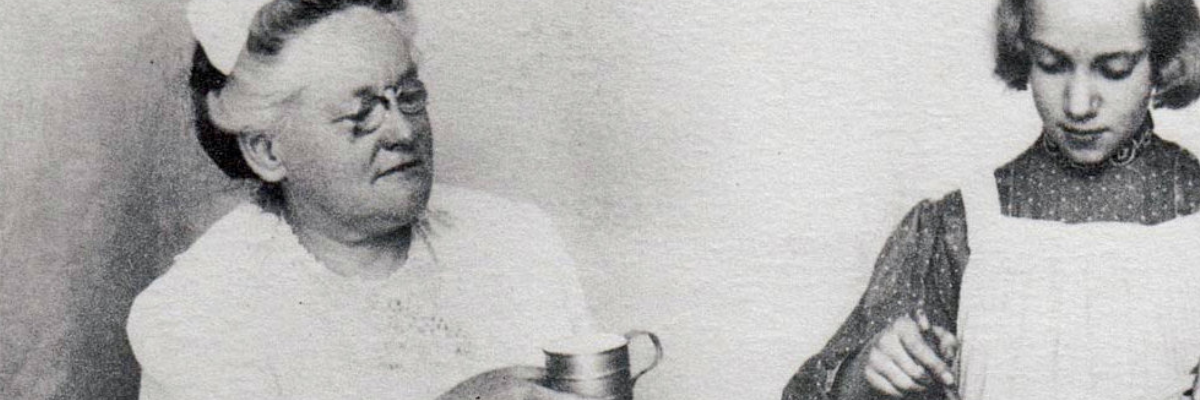
How jaded am I about corporate food supply practices? Enough so that when I first heard the name “Fannie Farmer”, I could have sworn it was a greenwashed brand packaging Hostess Treats.
Maybe that’s a testament to how true today’s food branding is to its hopeful past.
Today, Fannie Farmer is known as the inventor of the modern recipe…but her story starts long ago in 1857 Massachusetts.
Fannie Farmer was born the child of two middle class parents. Although the Farmers led a modest life, they emphasised the importance of education. Remarkably for the time, they planned to send all four of their daughters to college.
Unfortunately for Fannie, at the age of 16 she suffered from a stroke. She was left bedridden for months and given little hope of returning to her studies- or to normal life.
Her whole world was turned upside down. As she slowly regained her movement, she began to cook. To her, it was physical and emotional therapy. Being in the kitchen gave her a chance to exercise both her body and her mind, while creating something tangible and productive.
Fannie Farmer’s story, and life calling, began as she herself found healing and restoration in cooking.
What a marvelous parallel to our own 2020 lockdown lives, where flour sales soared by 221% due to everyone’ favorite pandemic hobby. For many, myself included, cooking (and binging The Great British Baking Show) became a way to cope with the uncertainty Covid-19. Through recipes we discovered how to nourish our minds and busy our hands with something we could share with others at a distance.
For some- like Farmer- it became a lasting love.
Fannie Farmer’s Miracle: The Modern Recipe
Before long, the Farmer home became a boarding house famous for Fannie’s culinary prowess. She also began working as a catch-all servant—governess/cook/maid—for a wealthy family friend.
The more she learned, the more Farmer became exasperated with her cookbooks.
Cookbooks of the mid-nineteenth century assumed the reader was well-schooled in the basics of cooking and left many instructions out- just like a good technical challenge from Mary Berry on The Great British Bake Off.
But instead of it being a great television drama, it was a kitchen nightmare.
The Industrial Revolution had sent the lower classes out of the home and into the factory. Traditional skills that were once part of daily life, from bread-making to food preservation, were fading away fast. Like my own misguided pandemic attempts to make a sourdough starter without a culture, self-taught chefs like Farmer were hitting a wall. Without the modern guidance of Youtube, her learning came to an abrupt stop when recipes began tossing out complicated terms and techniques without providing any guidance.
If you don’t know what a mirepoix is, how can you even begin to add one to a recipe?
Farmer was at a loss.
So in 1887 at 30 years old, Farmer enrolled in the Boston Cooking School. She spent her entire twenties thriving through her work in spite of her disability. Now, she would take a step into lasting fame and influence.
Germ Theory Meets The Kitchen
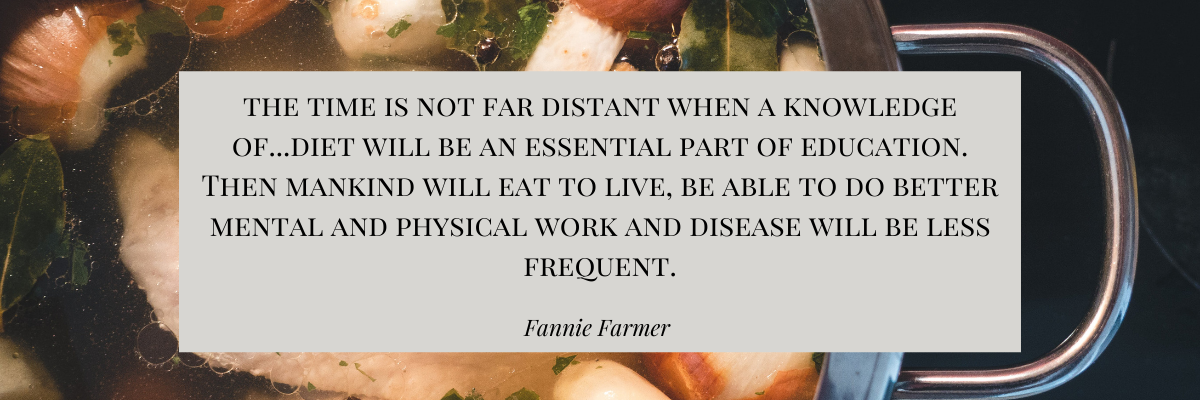
The Boston Cooking School stood at the forefront of the domestic science movement. Their mission? To formalize the education of household skills passed down orally, largely by women, for centuries.
At the time when Farmer enrolled, the Boston Cooking School focused on training domestic servants for Boston’s middle and upper class households.
Notably: the school was on the forefront of implementing the new science of germ theory into its coursework. Why is this important? Up until this point, no one really understood what germs were. Louis Pasteur coined the term germ theory in 1861. Four years later, Joseph Lister applied the theory to surgery.
Until Lister, germs were irrelevant during surgical performance- even less relevant in the kitchen. Without handwashing and proper sanitation, it was far too easy for disease to spread in a 19th century home.
The marriage of cleanliness paired with scientific cooking methods became a trademark of Fannie Farmer’s career- her methodology setting her apart from peers and educators. After graduating in 1889, Farmer was asked to remain as an assistant director. In 1894, she became head of the school.
Under Farmer’s direction, a new edition of The Boston Cooking School Cookbook was published. It offered clear instructions, scientific explanations, and – most importantly – standard measurements.
Although she did not invent the standard level measurements of cups, tablespoons, and teaspoons, Farmer was their most vocal supporter. Farmer knew that “a good amount” was not a clear measurement and would stump a beginning cook. Their omnipresence today is thanks to her influence.
Farmer’s Ongoing Success
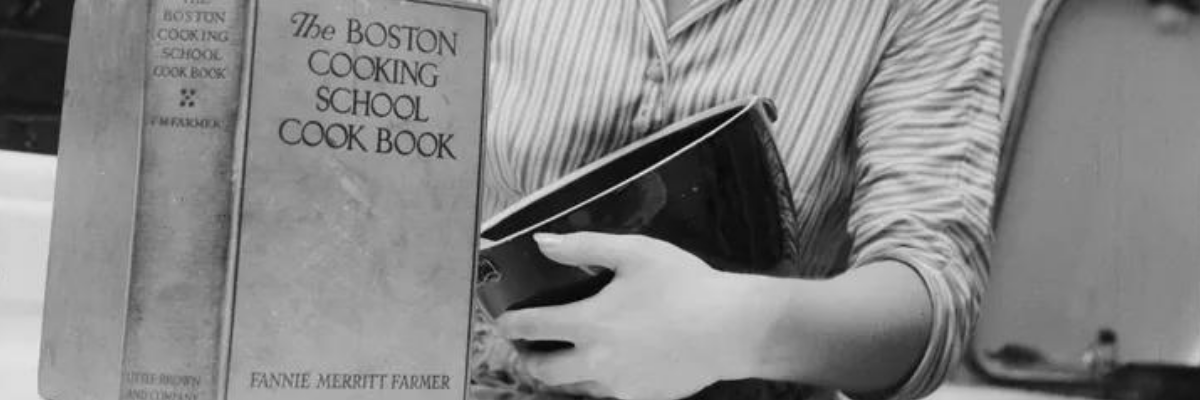
Odds are you’ve seen The Fannie Farmer Cookbook before. You might even unknowingly own a copy! Today, the Fannie Farmer Cookbook is on it’s 13th edition.
In it’s time, the book was even more prolific. Throughout the 20th century, it was such a popular wedding gift it earned the nickname, “the Bride’s Bible.”
By 1902, Farmer’s fame had increased so much that the forty-five year old decided to create her own school, Miss Farmer’s School for Cookery. Its claim to fame? She used this new environment to shift the focus from domestic servants to the realm of all women.
Dedicated to sharing her knowledge, Farmer offered classes, weekly lectures (which were published in The Boston Evening Transcript) and penned a weekly column for the Woman’s Home Companion. She served as the magazine’s food editor from 1905 to her death in 1915.=
Harvard University brought Farmer in as a guest lecturer to teach a course on cooking for the sick and chronically ill, a theme she explored in her 1904 book, Food and Cookery for the Sick and Convalescent.
Having already found fame as the influencer who created the modern recipe, popularized standard measurements, and emphasized kitchen cleanliness- she was about to make her mark one last time in the culinary industry. This time- post mortem.
At her origin, Farmer found healing through cooking. And something was about to happen to elevate her work into the realm of medicine: The 1918 flu.
Why Do We Eat Chicken Soup When We’re Sick?
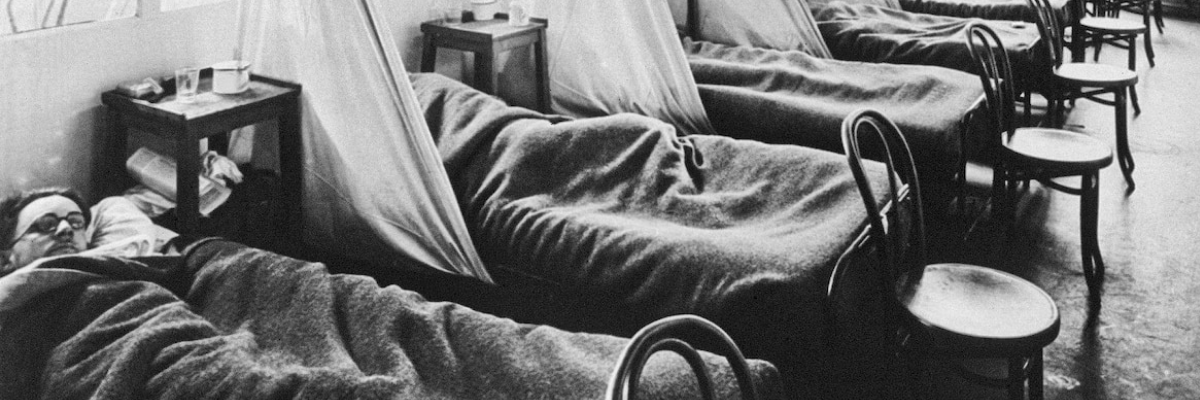
The 1918 influenza outbreak- the Spanish flu- was a particularly dark time in world history. The United States and most of western Europe was in shambles. An estimated 500 million people were infected worldwide, most of them young (20-40), and no one knew how to treat it.
The horrors of WWI coupled with this infectious disease crippled a generation of healthy, able-bodied men and women. In response, people scrambled for a cure.
But much like ivermectin in today’s time, most of the “cures” did more harm than healing. Physician’s prescribed copious amounts of alcohol as treatment. Others recommended taking laxatives to flush out the flu. Widespread misinformation dehydrated and weakened the ill, adding to the death toll.
On the bright side, for the first time in medical history, experts began to take a widespread serious look at germ theory. This led to increased hospital cleanliness- and design changes like the all-white hospital room and all-white residential kitchens.
Another medical advancement? Blood plasma was used as a treatment, and cut flu deaths in half. This style of treatment helped create modern day vaccinations.
But the biggest and most lasting lifestyle change was food.
Doctors, nurses, and housewives all pulled out their copies of Food and Cookery for the Sick and Convalescent. Caretakers, both professional and familial, saw the importance of broth and other easy-to-digest foods for flu stricken patients.
Moreso, they followed her food classification index to create nourishing meals. Farmer’s book puts forth the idea that eating healthy food creates a healthy body. Her idea of using food as preventative medicine- as opposed to treating symptoms when they arise- would have a lasting impact in the western kitchen.
Although Farmer passed three years prior to the pandemic, her work helped heal thousands.
Fannie Farmer’s Cooking Philosophy
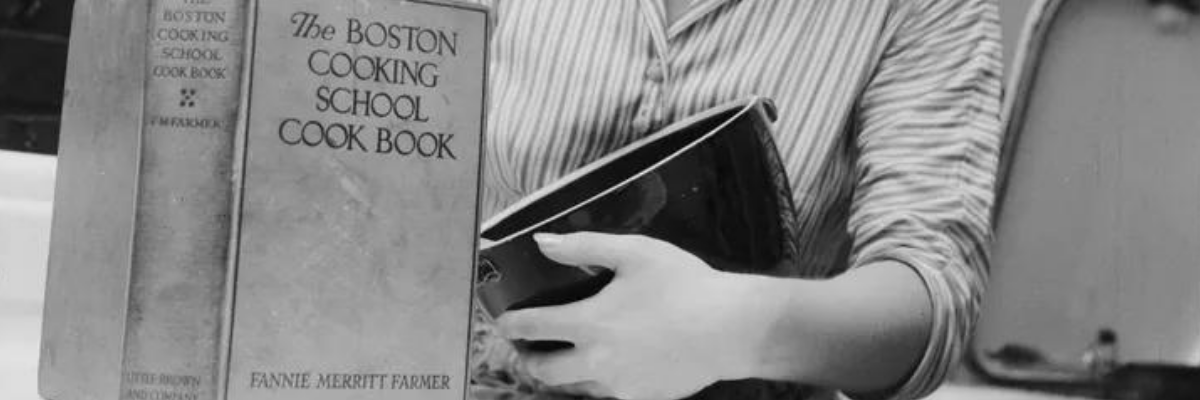
Farmer’s approach to cooking was rooted in something lost in the world of western diet culture: food’s role as nourishment.
Food is a source of energy, something which nurtures our bodies. It should be celebrated, not viewed as shameful. Much like ayurvedic cooking, Farmer believed you are what you eat. Instead of viewing this as punitive, both philosophies promote healing and patience with yourself.
While some of the theories of nutrition she was working with at the time have since been debunked, Farmer’s recipes strive to create a well-balanced diet. Farmer’s interest in food as nourishment and fuel, especially for the sick and disabled, was revolutionary.
She democratized cooking. Her recipes were simple and easily accessible to cooks of all skill levels. Fannie Farmer didn’t just help people make food. She helped them understand it.
Trying a Fannie Farmer Recipe For Yourself
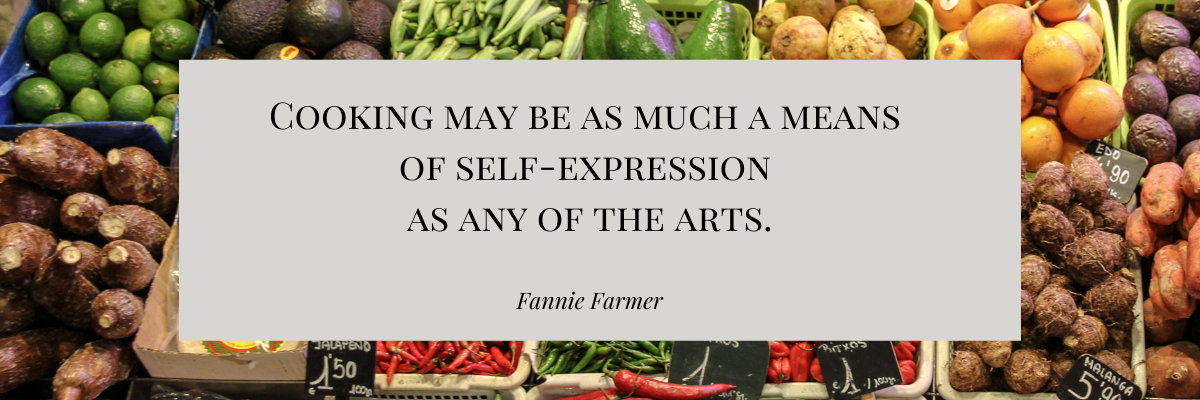
I simply cannot write an entire article about Fannie Farmer without trying one of her recipes.
So, armed with the 1918 edition of The Boston Cooking School Cook Book (the last version fully written by Farmer), I decided to try my hand at her cream of mushroom soup. Here’s how the recipe looks:
“½ lb. mushrooms
4 cups White Stock III [chicken stock]
1 slice[d] onion
¼ cup butter
¼ cup flour
1 cup cream
Salt
Pepper
2 tablespoons Sauterne
Chop mushrooms, add to White Stock with onion, cook for twenty minutes, and rub through a sieve. Reheat, bind with butter and flour cooked together, then add cream and salt and pepper to taste. Just before serving, add wine.”
Puzzling Out A Turn-Of-The-Century Recipe
Farmer’s recipes are short, simple, and straightforward.
However, if you’re used to modern recipes, you may have a few questions, like…
“Do I really need a sieve?” or
“What does “bind” mean?”
Just imagine for a moment what recipes before Fannie Farmer must have looked like!
Fortunately, I’ve a solid culinary background.
In her introduction to soup making, Farmer acknowledges a debt to French cuisine- so I’ve used this context to puzzle out her recipe. When she didn’t specify a variety of onion, I opted for the francophile’s beloved white. Instead of Sauterne, I decided to use the white cooking wine in my fridge. Any sweet white wine, such as Pinot Grigio, would also work as a substitute.
As I began cooking, I wondered why Farmer didn’t follow the method I was more familiar with: cooking everything, then puréeing in the blender.
Did you find the problem with my preferred modern method? Since the blender was not invented until 1922, it was not available to Farmer’s audience. Enter the sieve!
Historical context shines a light on other subtle nuances of this simple recipe: Farmer’s method of cooking the mushrooms and onions in stock allows for a much softer product that would break down much easier in the sieve.
I believe that Farmer would support a busy woman making the most of the modern conveniences available to her. So, I opted for store-bought chicken and used my trusty blender.
Now for the final puzzle: “bind with butter and flour cooked together.” Here, Farmer is referring to a classic roux.
With these mysteries solved, the soup came together quickly and easily! I would say that the recipe as Farmer wrote it makes 4-6 servings, depending on whether you are looking for a cup of soup to complement a meal or a full entree.
And the Most Important Question: How Does it Taste?
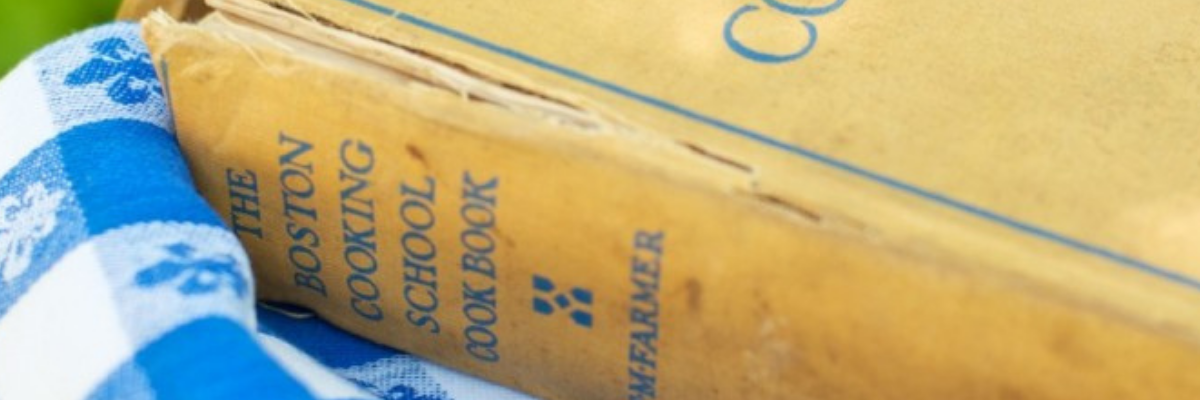
Wonderful.
This cream of mushroom soup is positively luxurious. It is rich, thick, and comforting—exactly what I am craving on a cold winter day.
Farmer’s treatise on the nutritional benefits of soup declares: “The cream soups and purées are so nutritious that, with bread and butter, they furnish a satisfactory meal.”
Well, I took her advice and served it up with some homemade bread (nothing fancy, just a King Arthur hearth loaf), and it made a wonderful dinner.
If you’re interested in trying other Fannie Farmer recipes, check out this wonderful tutorial of her angel food cake recipe by Tasting History with Max Miller, one of our absolute favorite YouTube channels!

